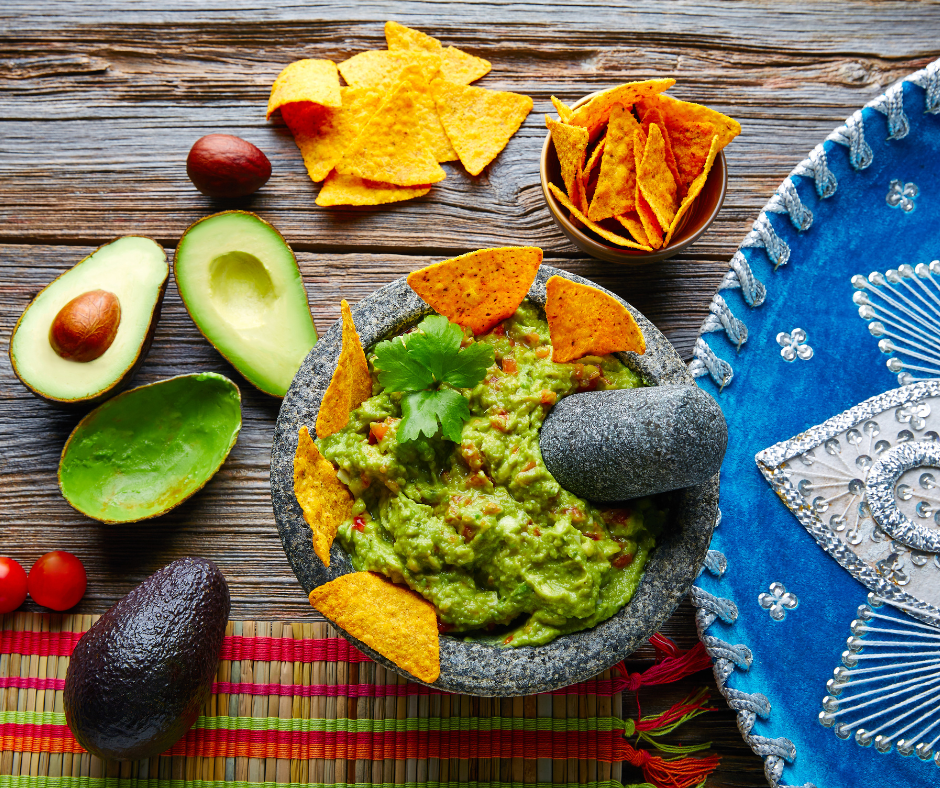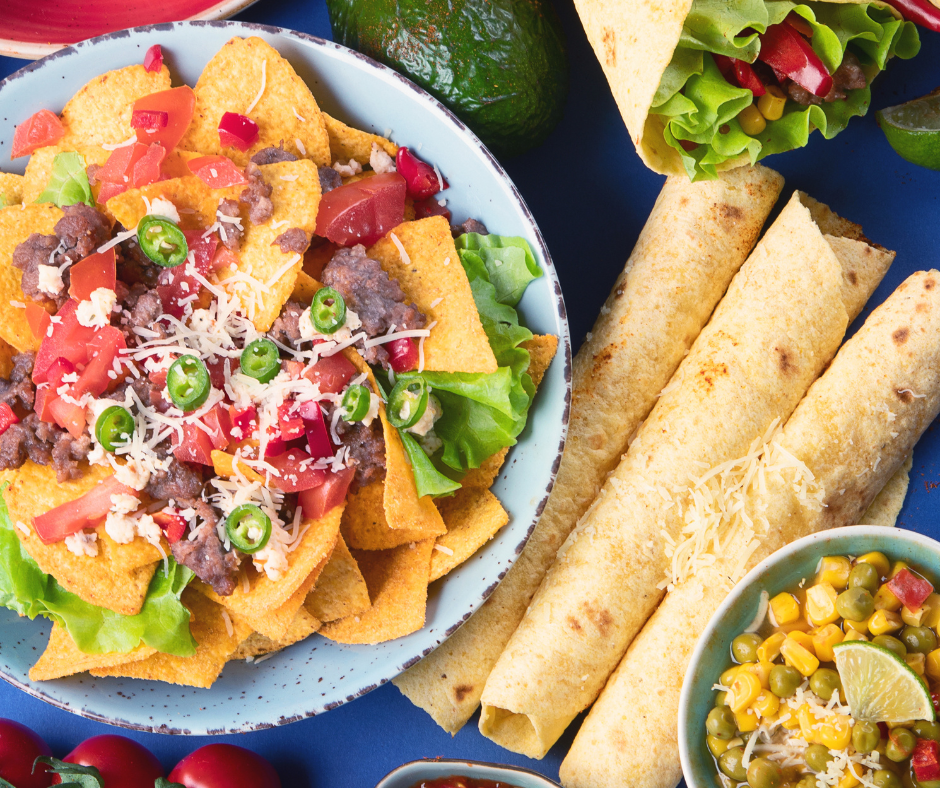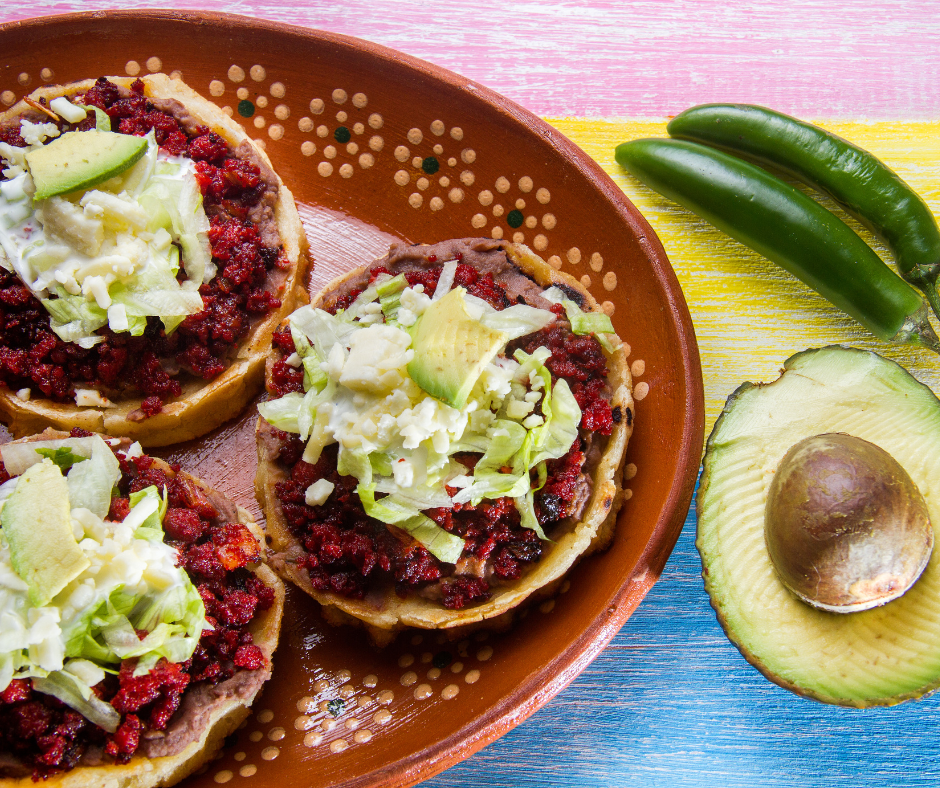Introduction
Navigating the food world can be challenging for individuals with dietary preferences or allergies. One popular cuisine that often raises questions is Mexican food. Is Mexican Food Gluten Free? Can it accommodate those with dietary restrictions? In this article, we will explore the topic and provide some insights.
Understanding Gluten And Its Impact On Dietary Preferences And Allergies
Gluten is a protein found in wheat, barley, and rye. It gives elasticity to dough, helping it rise and maintain its shape. However, consuming gluten can lead to various health issues for individuals with celiac disease or gluten sensitivity.
When it comes to Mexican food, many traditional dishes are naturally gluten-free. Corn tortillas, for example, are made from cornmeal and do not contain gluten. Tacos, enchiladas, and guacamole are typically safe options as well. However, avoiding cross-contamination in restaurants or when purchasing pre-packaged products is important.
Some Mexican dishes may contain gluten, such as flour tortillas or certain sauces thickened with wheat flour. It’s crucial to communicate your dietary needs to restaurant staff or carefully read ingredient labels if you have a gluten allergy or intolerance.
Fortunately, gluten-free alternatives are available for those who want to enjoy Mexican cuisine without worrying about their dietary restrictions. Many restaurants now offer gluten-free options or can modify dishes to accommodate specific needs.
In conclusion, while Mexican food can be gluten-free, it’s essential to be aware of potential sources of gluten in certain dishes and take necessary precautions. By communicating your dietary preferences or allergies and making informed choices, you can still savor the flavors of Mexican cuisine while staying true to your health needs.

What Is Mexican Food?
Mexican food is a vibrant and diverse cuisine that is loved by people all around the world. From tacos and enchiladas to guacamole and salsa, Mexican cuisine offers various flavors and ingredients that tantalize the taste buds. However, if you have dietary preferences or allergies, it’s important to navigate the menu carefully to ensure that your food is gluten-free.
Exploring The Variety Of Dishes In Mexican Cuisine
Mexican cuisine is known for its rich flavors and use of fresh ingredients such as corn, beans, tomatoes, avocados, and various spices. While many traditional Mexican dishes are naturally gluten-free, some dishes may contain gluten or be cross-contaminated with gluten during preparation.
Here are some popular Mexican dishes and their gluten-free status:
- Tacos: Traditional corn tortillas used in tacos are typically gluten-free. However, it’s important to check if the fillings and toppings are free from gluten-containing ingredients such as flour tortillas or sauces thickened with wheat.
- Enchiladas: Corn tortillas are commonly used for enchiladas, making them a good option for those following a gluten-free diet. However, be cautious of fillings and sauces that may contain gluten.
- Guacamole: Made from avocados, lime juice, onions, and cilantro, guacamole is naturally gluten-free. It’s a delicious and healthy dip enjoyed with gluten-free tortilla chips or as a topping for various dishes.
- Salsa: Salsa is typically made from tomatoes, onions, chili peppers, and other flavorful ingredients. Most salsas are gluten-free, but double-checking the ingredients list or asking the restaurant staff is always a good idea.
When dining out at Mexican restaurants, it’s important to communicate your dietary preferences or allergies to the staff. They can guide you in choosing gluten-free options or make accommodations to meet your needs. By being mindful and informed, you can enjoy the vibrant flavors of Mexican cuisine while staying true to your dietary requirements.
Common Ingredients In Mexican Food
Mexican cuisine is known for its rich flavors and diverse ingredients. From tacos and enchiladas to guacamole and salsa, there is something for everyone to enjoy. But navigating Mexican food can be a bit more challenging if you have dietary preferences or allergies, such as gluten intolerance.
Identifying Potentially Gluten-containing Ingredients
While many traditional Mexican dishes are naturally gluten-free, it’s important to be aware of certain ingredients that may contain gluten. Here are some common ingredients to watch out for:
- Flour tortillas: Traditional flour tortillas are made with wheat flour containing gluten. Opt for corn tortillas instead, as they are typically gluten-free.
- Sauces and seasonings: Some sauces and seasonings may contain gluten as a thickening agent. Be cautious of sauces like mole and adobo and pre-packaged spice mixes.
- Beer-based marinades: Certain Mexican dishes may be marinated in beer containing gluten. Ask your server or check the recipe to ensure the marinade is gluten-free.
- Breaded or fried foods: Breaded or fried foods like chiles rellenos or taquitos often use wheat flour in the breading. Look for grilled or roasted options instead.
- Cross-contamination: When dining out, cross-contamination can be a concern. Communicate your dietary needs to the restaurant staff and ask about their practices to prevent cross-contamination.
By being aware of these potentially gluten-containing ingredients and making informed choices, you can still enjoy the flavors of Mexican cuisine while accommodating your dietary preferences or allergies. Many Mexican restaurants also offer gluten-free options or can modify dishes to suit your needs, so don’t hesitate to ask for assistance.
Is Mexican Food Gluten Free?
When it comes to Mexican cuisine, many people wonder, ‘Is Mexican Food gluten-free?’. The good news is that plenty of traditional Mexican dishes are naturally gluten-free, making it easier for individuals with dietary preferences or allergies to navigate the menu.
Highlighting Traditional Mexican Dishes That Are Naturally Gluten-free
- Tacos: Corn tortillas are a staple in Mexican cuisine and are typically gluten-free. Fill them with your choice of protein, such as grilled chicken or beef, and top them with fresh salsa, guacamole, and cilantro for a delicious and safe gluten-free meal.
- Tamales: Made from masa, a type of corn dough, tamales are often filled with various ingredients like meats, cheese, or vegetables. These tasty treats are wrapped in corn husks and steamed until cooked. Just be sure to check the ingredients of any fillings or sauces to ensure they are gluten-free.
- Ceviche: This refreshing seafood dish marries raw fish or shrimp in citrus juices like lime or lemon. It is typically served with diced tomatoes, onions, cilantro, and avocado. Ceviche is naturally gluten-free and packed with flavor.
- Mexican Rice: A popular side dish, Mexican rice is made with long-grain rice cooked in a tomato-based broth with onions, garlic, and various spices. It is a flavorful, gluten-free option that pairs well with many Mexican dishes.
- Guacamole: Made from mashed avocados mixed with lime juice, cilantro, onions, and tomatoes, guacamole is a classic Mexican dip that is naturally gluten-free. Enjoy it with corn tortilla chips or topping for tacos and other dishes.
By highlighting these traditional Mexican dishes that are naturally gluten-free, individuals with dietary preferences or allergies can confidently enjoy the flavors of Mexican cuisine without compromising their health. Communicating your dietary needs to the restaurant staff to ensure a safe dining experience is always a good idea.

Gluten-free Options At Mexican Restaurants
Dining out can be challenging for individuals with gluten allergies or dietary preferences. However, Mexican cuisine offers a variety of gluten-free options that can satisfy your cravings without compromising your health.
Tips For Navigating Menus And Communicating Dietary Needs
- Do your research: Before heading to a Mexican restaurant, take some time to research their menu online. Many restaurants now provide information about their gluten-free options on their websites. This will help you plan and make informed decisions about what to order.
- Ask questions: When you arrive at the restaurant, don’t hesitate to ask your server about gluten-free options. They can provide more details about the ingredients used in specific dishes and help you make choices that align with your dietary needs.
- Be cautious of cross-contamination: While a dish may be gluten-free by ingredients, cross-contamination can still occur during preparation. Inform your server about your allergy or preference, and ask them to take precautions to avoid cross-contamination in the kitchen.
- Opt for naturally gluten-free dishes: Mexican cuisine offers several naturally gluten-free options, such as grilled meats, seafood, beans, rice, guacamole, salsa, and corn tortillas. These dishes are typically safe for individuals with gluten allergies or dietary preferences.
- Avoid fried foods: Many Mexican dishes are deep-fried, which can introduce gluten into the cooking process. Opt for grilled or sautéed options instead.
By following these tips and communicating your dietary needs effectively, you can enjoy a delicious meal at a Mexican restaurant while staying true to your gluten-free lifestyle. Remember always to prioritize your health and make informed choices when dining out.
Cross-contamination Risks
For individuals with dietary preferences or allergies, navigating the world of Mexican food can be a challenge. While Mexican cuisine does offer a wide range of gluten-free options, there are also potential risks of cross-contamination that need to be considered.
Understanding The Potential For Cross-contamination In Mexican Food Preparation
Cross-contamination occurs when gluten-containing ingredients come into contact with gluten-free ingredients or surfaces, leading to the unintentional presence of gluten in a supposedly gluten-free dish. In Mexican restaurants or food establishments, there are several areas where cross-contamination can occur:
- Shared cooking surfaces and utensils: Many Mexican dishes are prepared on shared grills, griddles, or fryers. This means that if gluten-containing items like tortillas or flour-based sauces are cooked on the same surface as gluten-free items, there is a risk of cross-contamination.
- Shared ingredients and condiments: Mexican dishes may use common ingredients like sauces, salsas, or marinades. If these condiments are not labeled gluten-free or have been contaminated with gluten-containing ingredients during preparation, they can pose a risk to individuals with gluten sensitivities.
- Handling practices: Proper handling practices are crucial in preventing cross-contamination. Suppose kitchen staff do not wash their hands thoroughly after handling gluten-containing ingredients or fail to use separate utensils for gluten-free items. In that case, it increases the likelihood of cross-contamination.
To ensure a safe dining experience for individuals with dietary preferences or allergies, it is important to communicate your needs to restaurant staff and ask about their procedures for preventing cross-contamination. Some restaurants may have dedicated gluten-free menus or separate cooking areas for gluten-free dishes.
By being aware of the potential risks and taking necessary precautions, individuals can still enjoy delicious Mexican cuisine while adhering to their dietary restrictions or allergies.

Gluten-free Mexican Ingredients And Substitutions
For individuals with dietary preferences or allergies, navigating the world of Mexican cuisine can sometimes be challenging. With its rich flavors and diverse ingredients, it’s important to understand which dishes are gluten-free and how to make substitutions when necessary.
Alternative Ingredients And Substitutes For Gluten-containing Components
When it comes to Mexican food, there are several gluten-free options available. Here are some common ingredients and substitutes that can be used to create delicious gluten-free Mexican dishes:
- Corn tortillas: Corn tortillas are naturally gluten-free and can be used as a substitute for flour tortillas in many dishes. They can be filled with various fillings to make tacos, enchiladas, or quesadillas.
- Rice: Rice is a staple in Mexican cuisine and is naturally gluten-free. It can be served as a side dish or as a base for dishes like burrito bowls or rice-stuffed peppers.
- Beans: Beans, such as black beans or pinto beans, are gluten-free and can be used as a protein source in Mexican dishes. They can be added to tacos and salads or used as a burrito filling.
- Salsa and guacamole: Salsa and guacamole are typically gluten-free and can be used as toppings or dips for various Mexican dishes. They add flavor and freshness to any meal.
- Corn chips: Corn chips, like tortilla chips, are often made from corn and are gluten-free. They can be enjoyed with salsa and guacamole or as a base for nachos.
It’s important to note that while many traditional Mexican dishes are naturally gluten-free, some may contain hidden sources of gluten. Checking with the restaurant or preparing homemade versions using gluten-free ingredients is always a good idea to ensure a safe and enjoyable dining experience.
Individuals with dietary preferences or allergies can still enjoy Mexican cuisine’s vibrant and flavorful world by understanding which ingredients are gluten-free and how to make substitutions.
Mexican Food And Other Allergies
For individuals with dietary preferences or allergies, navigating the world of Mexican food can sometimes be challenging. While Mexican cuisine is known for its bold flavors and diverse ingredients, it’s important to understand which dishes are gluten-free and suitable for those with specific dietary needs.
Addressing Common Allergies In Addition To Gluten Intolerance
When it comes to Mexican food, there are several common allergens that individuals may need to consider in addition to gluten. Here are some key points to keep in mind:
- Dairy: Many Mexican dishes contain cheese, sour cream, or other dairy products. If you are lactose intolerant or have a dairy allergy, it’s important to ask about dairy-free options or modifications when dining out.
- Nuts: Some Mexican recipes incorporate peanuts or tree nuts as ingredients. If you have a nut allergy, it’s crucial to inform the restaurant staff about your allergy and inquire about any potential cross-contamination risks.
- Shellfish: Seafood plays a significant role in Mexican cuisine; shellfish allergies can concern some individuals. Communicate your allergy to the restaurant staff and ask about alternative options that do not involve shellfish.
- Spices and Seasonings: Mexican dishes often feature a variety of spices and seasonings. While these are generally safe for most people, individuals with specific spice allergies should exercise caution and inquire about the ingredients used in each dish.
By being proactive and communicating your dietary preferences or allergies to the restaurant staff, you can ensure a safe and enjoyable dining experience. Additionally, many restaurants now offer gluten-free menus or can accommodate specific dietary needs upon request.
Remember, it’s always important to read labels carefully and consult a healthcare professional if you have any concerns or questions about your dietary restrictions.
FAQ: Is Mexican Food Gluten Free? Navigating Dietary Preferences and Allergies
Q: Are there gluten-free options available in Mexican cuisine?
A: Yes, there are gluten-free options available in Mexican cuisine. Mexico City, in particular, is known for being one of the best cities in the world for gluten-free foodies.
Q: Are there restaurants in Mexico City that offer gluten-free dishes?
A: Absolutely! Mexico City has a range of options for gluten-free foodies. From dedicated gluten-free spots to mid-range restaurants and even some of the finest dining experiences, you can find various gluten-freees to suit your tastes.
Q: Can you provide examples of gluten-free dishes commonly found in Mexico?
A: Some commonly wheat-free dishes in Mexico include tacos (with corn tortillas), soups, snacks, gluten-free cereals, pancakes, pizzas, pasta, sandwiches, and desserts such as gluten-free pineapple pie and apple pie.
Q: Is navigating the taco places in Mexico City easy if I have dietary restrictions?
A: Yes, if you have dietary restrictions, specifically gluten-free restrictions, you’ll be able to navigate the various taco places in Mexico City without much difficulty. Just make sure to opt for corn tortillas instead of wheat-based tortillas.
Q: Where can I find shops with gluten-free products in Mexico City?
A: A well-known grocery store in Mexico City with multiple locations and a focus on local and seasonal products carries a range of gluten-free and vegan items. This store is considered a higher-end grocery option.
Q: How can I navigate the dishes and find alternatives when eating out?
A: The Essential Gluten-Free Guide to Mexico (2023 Update) provides a comprehensive guide to navigating the dishes you’ll find in Mexico. It offers alternatives and highlights ingredients to watch out for, such as bread, egg bread, and sauces that may contain wheat.
Conclusion
Now you should know the answer to ‘Is Mexican Food Gluten Free?’. Research and communication are key when it comes to enjoying Mexican food while adhering to dietary preferences and allergies. By understanding Mexican cuisine’s ingredients and preparation methods, individuals can make informed choices that align with their needs. Whether you are gluten-free, lactose intolerant, or have other dietary restrictions, there are often options available at Mexican restaurants that can accommodate your preferences.
Emphasizing The Importance Of Research And Communication In Enjoying Mexican Food While Adhering To Dietary Preferences And Allergies
- Research: Before dining at a Mexican restaurant, take the time to research the menu and ingredients. Look for dishes that naturally align with your dietary preferences or can be easily modified to meet your needs. Many traditional Mexican dishes are naturally gluten-free, such as tacos made with corn tortillas or grilled meats and vegetables.
- Communication: Don’t hesitate to communicate your dietary restrictions or allergies to the server or chef when dining out. They can guide suitable options or make necessary modifications to accommodate your needs. Mexican cuisine often incorporates a variety of ingredients, so it’s important to ask about potential allergens or cross-contamination risks.
Graham Bartlett, owner at Taco and Piña Mexican food, is all about bringing the authentic flavors of Mexico to your plate. With Graham Bartlett, you can tantalize your taste buds with mouthwatering tacos and delicious piña coladas, all in one place. Stay connected and never miss a beat as Graham Bartlett takes you on a culinary journey through vibrant Mexican cuisine. Join the community and discover the perfect blend of flavor, culture, and passion that Graham Bartlett brings to the table. Experience the essence of Mexico, one bite at a time, with Graham Bartlett.
